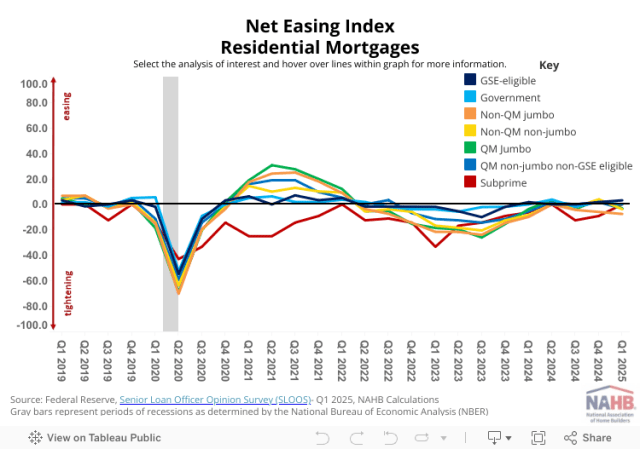Single-family Construction Loan Volume Grows
Jesse Wade2025-06-20T10:15:46-05:00Credit conditions for builders and developers eased in the first quarter of 2025 as the level of outstanding 1-4 family residential construction loans rose for the first time in two years, according to data released by FDIC. While the volume of 1-4 family residential construction loans rose, a drop in other real estate development loans offset the increase, resulting in the fifth straight quarterly decline in the total volume of outstanding acquisition, development, and construction loans. In the first quarter of 2025, the total level of outstanding acquisition, development, and construction loans fell to $478.3 billion, down 4.1% from a year ago. This was driven by the drop in other real estate development loans, which fell to $388.2 billion, down 3.8% compared to the a year ago. The volume of 1-4 family residential construction and land development loans totaled $90.0 billion in the first quarter, down 5.2% from a year ago. On a quarterly basis, this volume is up 0.6% from $89.5 billion one quarter ago. It is worth noting, the FDIC data represent only the stock of loans, not changes in the underlying flows, so it is an imperfect data source. Nonetheless, lending remains much reduced from years past. The current amount of existing 1-4 family residential AD&C loans now stands 56% lower than the peak level of residential construction lending of $204 billion reached during the first quarter of 2008. Alternative sources of financing, including equity partners, have supplemented this capital market in recent years. Quality Metrics of Construction Loans Along with the volume increase of 1-4 family residential construction loans, the share of the volume that is 30+ days past due or nonaccrual status grew in the first quarter. The total level of past due and nonaccrual loans was $1.2 billion, up 24.4% from $978.4 million a year ago. As a share of the total 1-4 family residential construction loan volume, this accounts for only 1.4% but is notably the highest share since 2015. Discover more from Eye On Housing Subscribe to get the latest posts sent to your email.


